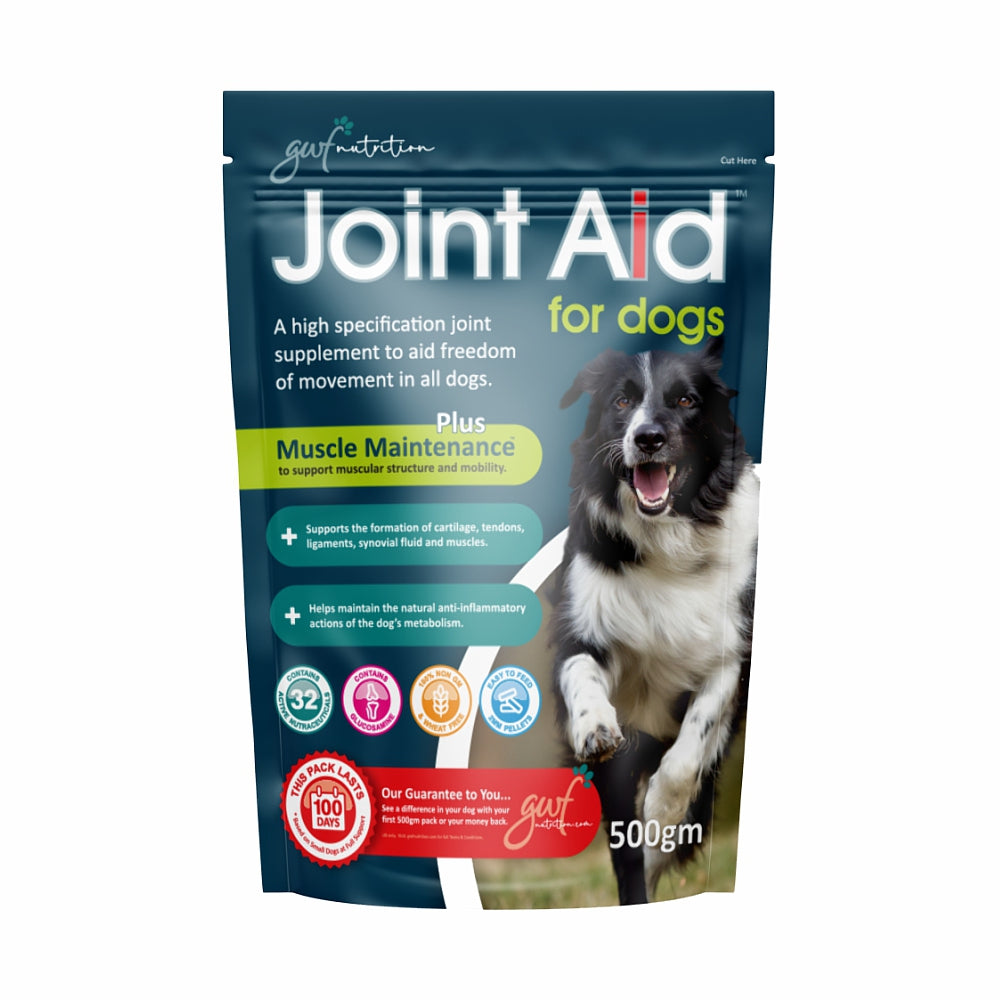What is Hip Dysplasia in Dogs?
Canine hip dysplasia is a hereditary condition which starts off in puppyhood and progresses into adulthood.
The hip joint is made up of a ‘ball and socket’ and should fit ‘snugly’ together. When one or both joints develop abnormally, the result is an unhappy pup with a hip joint that doesn’t fit properly into the hip socket, meaning wear and tear of the cartilage, and eventually arthritis.
In young dogs, this tends to be less visible. However, you may notice signs as your pup grows, such as seeing the muscle looking thinner/losing mass (known as muscle atrophy) or possibly joint changes and limited mobility.
Which Dog Breeds are Most Likely to Develop Hip Dysplasia?
Hip dysplasia is typically found among stockier or larger breeds of dogs and can affect both males and females.
Breeds prone to hip dysplasia include:
- German Shepherds
- Golden retrievers
- Labrador retrievers
- Bull dogs
- Mastiffs
- Saint Bernards
- Bassett Hounds
- Bloodhounds
- Newfoundlands
- Pit bulls
- Chows Chows
- Rottweilers
- Chesapeake Bay Retrievers
How Can You Tell if Your Dog has Hip Dysplasia?
When looking for signs of canine hip dysplasia, it's key to start looking when they are young. You may notice signs from as early as 3 months old. Key areas to look for include gait abnormalities or lameness. For dogs that have a mild version of the condition, its usual to see signs of hip arthritis at an older age.
Typical signs of hip dysplasia include:
- Bunny hopping (when a dog runs with both back legs moving together)
- Lameness
- Limping
- Stiffness
- Difficulty getting up/lying down
- Wobbly or swaying back
- Difficulty jumping (going up/down stairs)
- Less interest in walks
- Skinny hips (due to muscle wastage)
- Clicking sounds from the hips when moving
- Weight shifting to the front
- Lethargy
Conservative management is really important for young puppies showing signs of hip dysplasia, as it can help stabilise the condition into adulthood – meaning a reduced need for expensive advanced therapy in later life. Things like physical therapy and limiting exercise will help the puppy as they reach stabilisation, so spotting signs early can be incredibly useful.
What are the 4 Stages of Hip Dysplasia in Dogs?
The Early Stage
Whilst it’s more difficult to see clear signs in the early stages of hip dysplasia (especially in puppies), you may be able to see some changes in joint structure. At this point there will be no evidence of arthritis, discomfort or lameness.
The Mild Stage
At this stage you are more likely to notice some occasional discomfort and joint changes in your dog. There are likely to be signs of arthritis due to wear of the cartilage, and after prolonged activity or exercise, you will notice your dog in some discomfort, or showing signs of lameness and stiffness.
The Moderate Stage
During the moderate stage, you will notice your dog in more discomfort and showing signs of abnormality in the hip joint. You will notice that moving around will be difficult and there will be signs of joint instability and stiffness – at this point it could be that your dog is developing more severe arthritis.
The Severe Stage
When hip arthritis is severe, you will see more signs of lameness, stiffness and difficulty moving, as a result of the hip joint being malformed. You may also see signs of muscle wastage and weakness.
What Treatment is There for Dogs with Hip Dysplasia?
If you think your dog is showing signs of hip dysplasia, it is important to take your dog to the vet as soon as possible. In most cases your vet may suggest home remedies to help manage the condition, and prescribe pain killers to help manage the pain.
Home treatments include careful exercise management, weight control and rest after exercise. Regular short lead walks are ideal for dogs with hip dysplasia, and if possible try to avoid activities which involve your dog jumping or chasing around for long periods of time. Weight control will also help avoid any excess strain on your dog’s joints.
If you notice your dog is in some discomfort, make sure he rests and if you feel your dog’s condition is worsening, consult your vet to determine the best treatment going forward. For dogs with severe hip dysplasia and who do not respond to daily management, your vet may suggest surgery.
Physiotherapy is an excellent way to help your dog build muscle and reduce the pressure on their hips. Similarly, hydrotherapy can be helpful in exercising your dog, to maintain muscle mass, whilst not putting pressure on their joints.
Can I Prevent My Dog from Getting Hip Dysplasia?
Unfortunately, it is not possible to prevent your dog from having hip dysplasia as it is a hereditary condition. The best course of action to reduce the severity of the condition is to keep an eye out for signs and to ensure proper care with weight management and exercise. Introducing a daily joint supplement early on can also help to make sure the correct nutrients are fed to support optimum muscle and joint health. Read more in our guide to the best joint supplements for dogs.
There are some schemes in place to check for hip dysplasia in breeding dogs, aimed at trying to reduce the number of puppies born with the condition. If you are planning to buy a new dog, make sure you buy from reputable breeders who screen for health conditions. If in doubt, speak with your local vet for advice, especially if you are planning to choose a dog breed that is prone to hip dysplasia.

